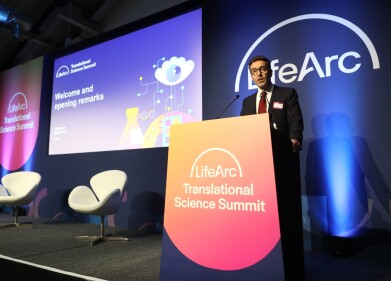-
 New treatment for cystic fibrosis moves closer
New treatment for cystic fibrosis moves closer
News & Views
New treatment for cystic fibrosis moves closer
Sep 13 2013
A new treatment for the debilitating and sometimes deadly condition cystic fibrosis has moved a step close, after European experts identified a new drug target for the disease.
According to scientists at the European Molecular Biology Laboratory (EMBL) in Heidelberg and Regensburg University in Germany, and the University of Lisboa in Portugal, the promising new strategy reverses the effects of cystic fibrosis and restores control of epithelial sodium channel.
In addition, the study, which has been published in the journal Cell, has uncovered a large set of genes that were not previously linked to the disease, which experts say demonstrates how a new screening technique can help identify potential drug targets.
Cystic fibrosis is caused by mutations in a single gene called CFTR, which render it unable to carry out its normal tasks, including the ability to control a protein known as epithelial sodium channel (ENaC).
As a result, ENaC becomes hyperactive, which leads to the cells in the lungs absorbing too much sodium and the mucus in patients’ airways becoming thicker, while the lining of the lungs becomes dehydrated.
The experts worked on the basis that the best way to fight the disease is to formulate a therapy that would act upon ENaC instead of trying to correct CFTR mutations.
Rainer Pepperkok, whose team at EMBL developed the technique, commented: "In our screen, we attempted to mimic a drug treatment. We’d knock down a gene and see if ENaC became inhibited."
The specialists discovered that around 700 genes brought down ENaC activity, one of which was a gene known as DGKi. When they tested chemicals that inhibit DGKi in lung cells from cystic fibrosis patients, the scientists discovered that it appears to be a very promising drug target.
Margarida Amaral from the University of Lisboa explained that inhibiting DGKi appears to reverse the effects of cystic fibrosis, but not block ENaC completely; it reduces activity enough for cells to return to normal, but not so much that they lead to other problems such as pulmonary oedema.
The initial results have led researchers to patent DGKi as a drug target and explore the issue further, identifying molecules that strongly inhibit DGKi without causing side-effects, explained Karl Kunzelmann from Regensburg University.
He commented: "Our results are encouraging, but these are still early days. We have DGKi in our cells because it is needed, so we need to be sure that these drugs are not going to cause problems in the rest of the body."
Digital Edition
Lab Asia 31.2 April 2024
April 2024
In This Edition Chromatography Articles - Approaches to troubleshooting an SPE method for the analysis of oligonucleotides (pt i) - High-precision liquid flow processes demand full fluidic c...
View all digital editions
Events
May 14 2024 Oklahoma City, OK, USA
May 15 2024 Birmingham, UK
May 21 2024 Lagos, Nigeria
May 22 2024 Basel, Switzerland
Scientific Laboratory Show & Conference 2024
May 22 2024 Nottingham, UK






.jpg)










